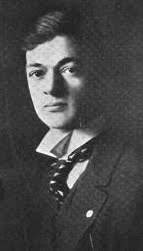
Julius Dassin was an American film and theatre director, producer, writer and actor. A subject of the Hollywood blacklist in the McCarthy era, he subsequently moved to France, and later Greece, where he continued his career. He was a member of the Academy of Motion Picture Arts and Sciences and the Screen Directors' Guild.
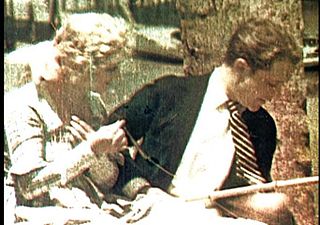
The Gulf Between is a 1917 American comedy-drama film that was the first motion picture made in Technicolor, the fourth feature-length color film, and the first feature-length color film produced in the United States. The film was destroyed in a fire on March 25, 1961. Today, the film is considered a lost film, with only very short fragments known to survive. These fragments are in the collections of the Margaret Herrick Library, George Eastman House Motion Picture Collection, and the Smithsonian National Museum of American History Photographic History Collection.
The Top Ten Money Making Stars Poll were polls on determining the bankability of movie stars. They began quite early in the movie history. At first, they were popular polls and contests conducted in film magazines, where the readers would vote for their favorite stars, like the poll published in New York Morning Telegraph on 17 December 1911. Magazines appeared and disappeared often and among the most consistent in those early days were the polls in the Motion Picture Magazine.

The Trail of the Lonesome Pine is a 1923 American silent Western film directed by Charles Maigne and starring Mary Miles Minter. It was adapted by Will M. Ritchey from the play and novel of the same name by John Fox Jr. This was the second time that Maigne had directed Minter in an adaptation of a Fox novel, the first being 1920's A Cumberland Romance. This was Minter's final film; her contract with Paramount Pictures was not renewed, and she stated that she was "through" with films. As with many of Minter's features, The Trail of the Lonesome Pine is thought to be a lost film.

Agnes Vernon was an American film actress of the silent era. While still in her teens, she experienced a meteoric ascent from obscurity to box-office sensation. After turning twenty-three and a movie career fading away, she abandoned the silver screen forever. Vernon performed in over 90 films between 1913 and 1922. She completed most of her roles under contract with Universal Pictures.
In the Name of the Law is a 1922 American silent melodrama directed by Emory Johnson. FBO released the film in August 1922. The film's "All-Star" cast included Ralph Lewis, Johnnie Walker, and Claire McDowell. The cast also included Johnson and his wife, Ella Hall. Emilie Johnson, Johnson's mother, wrote both the story and screenplay. In The Name of the Law was the first picture in Johnson's eight-picture contract with FBO.

The Motion Picture Herald was an American film industry trade paper published from 1931 to December 1972. It was replaced by the QP Herald, which only lasted until May 1973. It was established as the Exhibitors Herald in 1915.

The Moving Picture World was an influential early trade journal for the American film industry, from 1907 to 1927. An industry powerhouse at its height, Moving Picture World frequently reiterated its independence from the film studios.

Something Different is a lost 1920 American silent drama film produced and distributed by Realart Pictures, an affiliate of Famous Players–Lasky and Paramount Pictures. It is based on a novel, Calderon's Prisoner, by Alice Duer Miller. The picture was directed by Roy William Neill with some filming being done in Cuba. Some of the cast's passport photos to enter Cuba for this production are found at Flickr.
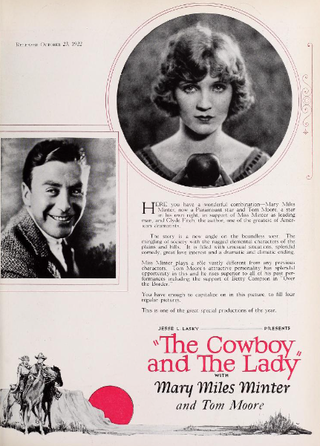
The Cowboy and the Lady is a 1922 American silent Western film directed by Charles Maigne and starring Mary Miles Minter and Tom Moore. It was adapted by Julien Josephson from the 1908 play of the same name by Clyde Fitch, and was shot on location at Jackson Hole in Wyoming. As with many of Minter's features, it is thought to be a lost film.

John K. Wells was an American actor, director, producer, and writer of the Silent film era. Wells was a 29-year old actor who earned his first credited role in the 1915 Universal short film — The Queen of Hearts.

Bryna Productions is an American independent film and television production company established by actor Kirk Douglas in 1949. The company also produced a handful of films through its subsidiaries, Michael Productions, Joel Productions and Douglas and Lewis Productions, and outside the United States through Brynaprod. Other subsidiaries included Eric Productions, which produced stage plays, Peter Vincent Music, a music publishing company, Bryna International, a photographic service company, and Public Relations Consultants, which supervised the publicity of its early films. Douglas named the main company after his mother, Bryna Demsky, while its primary subsidiaries were named after his sons: Michael Douglas, Joel Douglas, Peter Douglas and Eric Douglas. In 1970, Bryna Productions was renamed The Bryna Company, when Douglas welcomed his children and second wife into the firm. Nevertheless, Michael, Joel and Peter, wanting to establish individual identities, went on to form their own independent film production companies.

Martin Joseph Quigley Sr. was an American publisher, editor and film magazine journalist. He founded Exhibitors Herald, which became an important national trade paper for the film industry. He was also the founder of Quigley Publishing.

Motion Picture Daily was an American daily magazine focusing on the film industry. It was published by Quigley Publishing Company, which also published the Motion Picture Herald. The magazine was formed by the merging of three existing Quigley publications: Exhibitors Trade Review, Exhibitors Daily Review, and Motion Pictures Today. The first issue was published in April 1931. The magazine was in circulation until 1972.
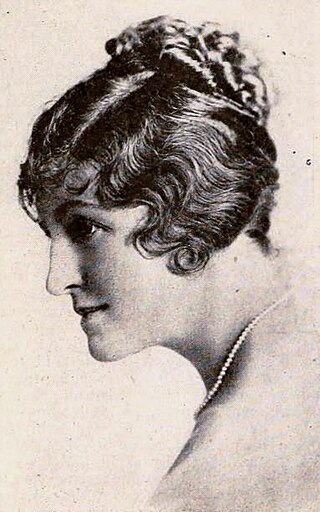
Pearl Doles Bell was an American novelist, film scenarist, radio script writer, and editor. During her career, she published eight novels and had numerous stories adapted into silent films. She was especially known for writing film stories for silent film star Shirley Mason.

The Mailman is a 1923 American silent melodrama directed by Emory Johnson. FBO released the film in December 1923. The film's "All-Star" cast included Ralph Lewis, Johnnie Walker, and Virginia True Boardman. Emilie Johnson, Johnson's mother, wrote both the story and screenplay. The Mailman was the fourth film in Johnson's eight-picture contract with FBO.

The Spirit of the USA is a 1924 American silent melodrama directed by Emory Johnson. FBO released the film in May 1924. The film's "All-Star" cast included Johnnie Walker and Mary Carr. Emilie Johnson, Johnson's mother, wrote both the story and screenplay. The Spirit of the USA was the fifth film in Johnson's eight-picture contract with FBO.

Edwin Middleton (1865–1929) was a film director in the United States.
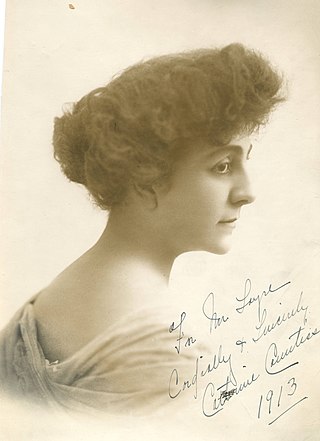
Birdie Sherman Crooks, known professionally as Cathrine Countiss — often misspelled in media as Catherine Countiss — was an American actress at the beginning of the 20th century. She appeared in multiple Broadway productions, traveling stock companies, vaudeville tours, and silent films, traveling across the United States and portions of Canada during her career that spanned the years 1901 through 1915. She was married three times including to Edward D. Price, who was also her theatrical agent during their time of marriage.

The Unattainable is a 1916 American Blank and White silent drama directed by Lloyd B. Carleton. The film is based on the story by Elwood D. Henning. The photoplay stars Dorothy Davenport and Emory Johnson.
